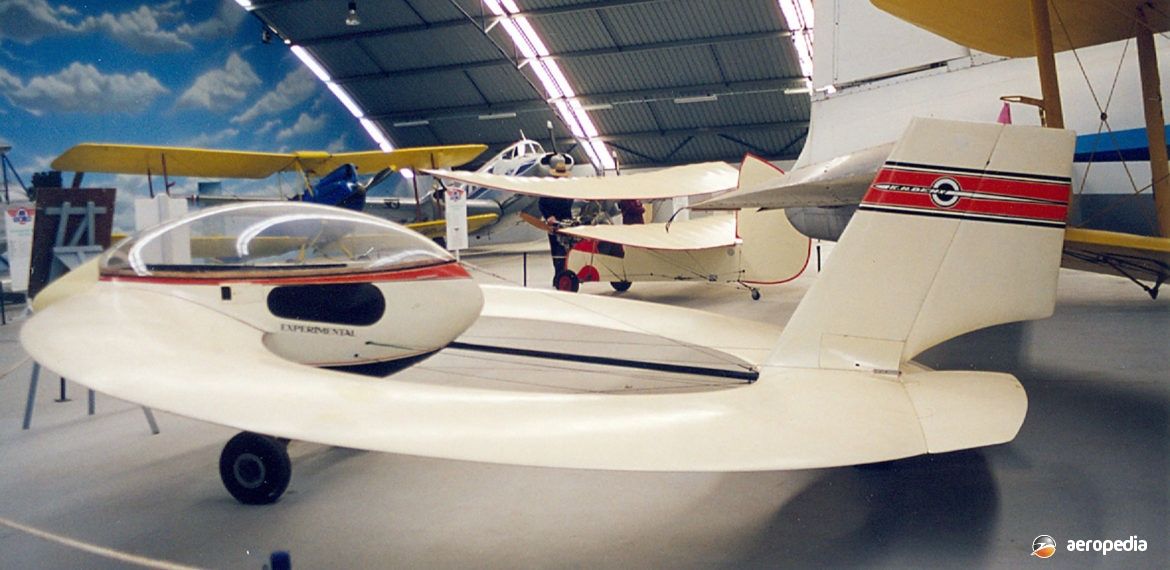Photograph:
Dehn Ring Wing prototype at Airworld at Wangaratta, VIC in 1998 (David C Eyre)
Country of origin:
Australia
Description:
Single-seat light experimental sport aircraft
Power Plant:
TBA
Specifications:
- TBA
History:
The Dehn Ring Wing was built in 1972 by its designer, Karl Dehn, in Victoria where it was known around Benambra (near Omeo) as “the Flying Dunny Seat”. Little is known about its design and development program, but it is known to have flown for the first time in October 1985 in engineless form in order to test the concept prior to an engine being installed. It was about 4.4 m (14 ft 4 in) in diameter and constructed basically of fibreglass.
Air testing in 1997 comprised being towed behind a truck, the pilot being Benjamin Buckley, a crop dusting and charter pilot, from his airstrip at Benambra, who is recorded as having 23,000 flying hours. Mr Dehn had spoken to Mr Buckley and the latter said if he brought the aircraft to his airstrip he would do the test flying. Following esting behind the truck, testing took place also behind a car across a lake bed and it was found to be quite stable. On October 5 that year it was towed to 914 m (3,000 ft) and flew for 15 minutes at speeds up to 240 km/h (150 mph) before landing on the dry lake bed. On one occasion it was towed to the maximum height available with the rope, was released and flew well, overtaking the tow car and landing ahead of the car.
The aircraft was controlled by a rudder and split elevators, which also acted as ailerons. Mr Buckley flew the aircraft nine times during early testing. Later the aircraft was fitted with an engine but it is not believed to have flown in this configuration. On another occasion it was towed behind a glider tug to 1,000 m (3,281 ft) and when it was released it increased speed and overtook the tow aircraft. It was found to be fast in the glide and had effective pitch control.
However, dreams of this circular wing aircraft died with the death of the designer in the early 1980s, he having become ill and passing away during surgery. It is said the design was proven but never came to reality. The aircraft, without engine, was placed on display at Airworld mueum at Wangaratta, VIC until that complex closed. Its present whereabouts is not known.
This type of design has been experimented with around the world for many years and examples included the Lee-Richards Annular monoplanes Nos 1, 2 and 3 built and tested in the United Kingdom, the first flying at Shoreham aerodrome in West Sussex on 23 November 1913; and the John Kitchen annular biplane built in Lancashire in 1911. The first Englishman to patent the design for a bicular (or circular) flying machine was Isaac Storey at Ambleside in Westmorland, Great Britain, in 1909.
An aircraft of similar configuration was designed in Sydney, NSW by Ron Feast and, known as the Feast Circle and registered VH-RII (c/n R090), it was built at Bankstown, NSW and is dealt with in a separate article. Another similar aircraft was noted at Oshkosh in Wisconsin, USA in 2001.

